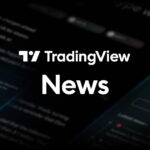The stock market has shown significant growth recently, but experts caution that potential challenges could undermine this upward trend. In their latest analysis, HSBC’s global investment team highlighted several critical risks that could potentially disrupt the ongoing rally, particularly given the backdrop of President Donald Trump’s tariffs, which initially unsettled financial markets in early April.
Despite their identified risks, HSBC maintains a favorable outlook overall, declaring themselves “aggressively risk-on” and remaining overweight on U.S. stocks. However, strategists express concern that the recent surge to record highs may not be sustainable due to various factors.
One of the most pressing dangers noted is the possibility that the Federal Reserve shifts towards a more hawkish stance than market participants anticipate. HSBC suggests that if the U.S. economy begins to re-accelerate, the central bank might reconsider its current course of interest rates. They mention that current market pricing appears overly dovish, with expectations for immediate rate cuts—89% chance next month and 68% chance in November—potentially failing to account for future rate hikes, which could arrive by late 2026 or early 2027. Such a shift could pose a serious threat to the prevailing optimistic market sentiment.
Another concern raised is the potential stagnation of the booming artificial intelligence sector, particularly as high-growth stocks rally. Currently, there is significant concentration within the tech sector; the top ten companies in the S&P 500 comprise a staggering 54% of the index. HSBC warns that if the AI trade loses momentum, it could lead to a decline that would affect broader risk assets. However, they emphasize that this scenario is unlikely because investment in technology continues to grow, and corporate earnings expectations are improving.
Furthermore, the imminent ruling by the Supreme Court regarding the legality of Trump’s tariffs adds another layer of uncertainty. If the court were to invalidate these tariffs, it could cause initial turmoil in the stock market. While some analysts believe that such a ruling might lead to increased corporate earnings through reimbursements, HSBC cautions that it could exacerbate concerns over the fiscal deficit, potentially resulting in a decline of long-end U.S. Treasury bonds and increased yields—particularly if the 10-year Treasury surpasses a critical threshold defined as the “Danger Zone” at 4.7%.
Moreover, HSBC pointed out that investor optimism might lead to a contrarian sell signal if people become overly bullish on the direction of stocks. Though their sell indicators are not currently showing signs of excessive sentiment, the situation remains fluid, and any shift could prompt a decline in risk assets, albeit possibly fleeting.
Finally, the health of the labor market remains a crucial factor. If payroll data continues to fall short of expectations, it could trigger a brief pullback in the market, sparking fears of more aggressive rate cuts by the Fed, which would heighten risk aversion among investors. However, even a significant downturn in employment is projected to be a short-term risk, as the Fed is already bracing for lackluster job growth in the months ahead.
In summary, while the stock market continues its rally, professionals at HSBC warn about various downside risks ranging from monetary policy shifts to potential weaknesses in technological investments and labor market conditions. Investors are advised to stay vigilant as these factors could significantly influence market dynamics moving forward.







